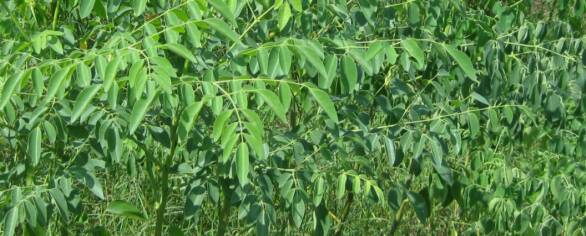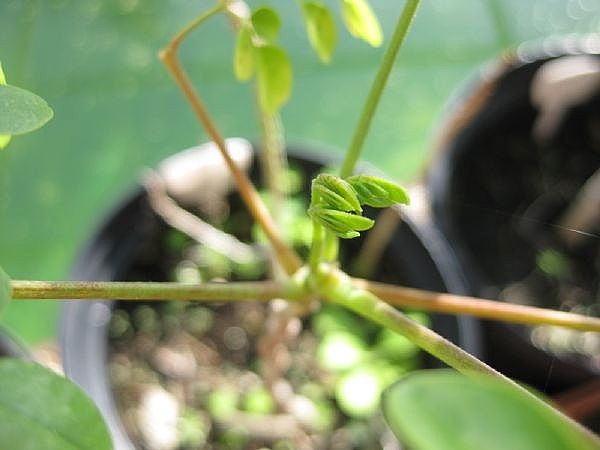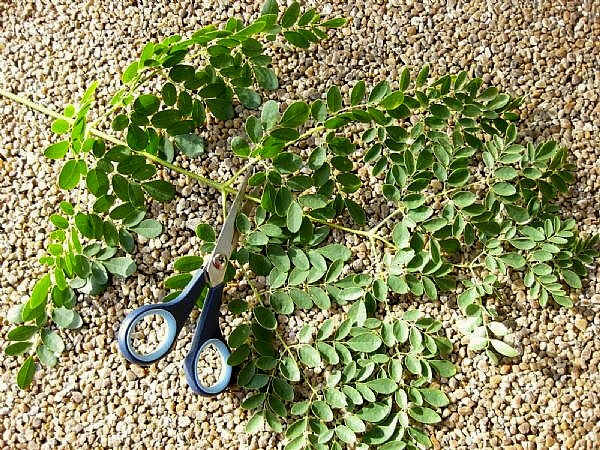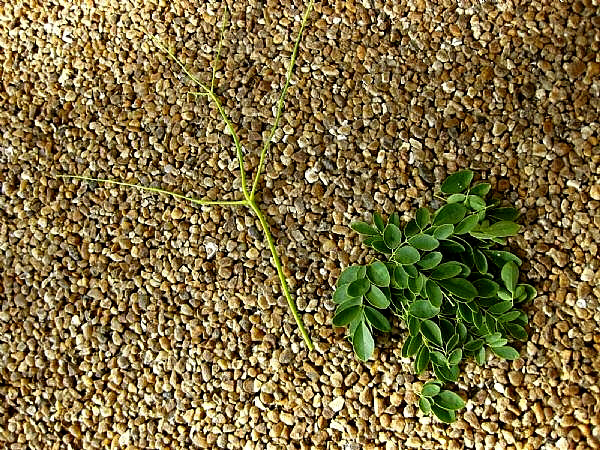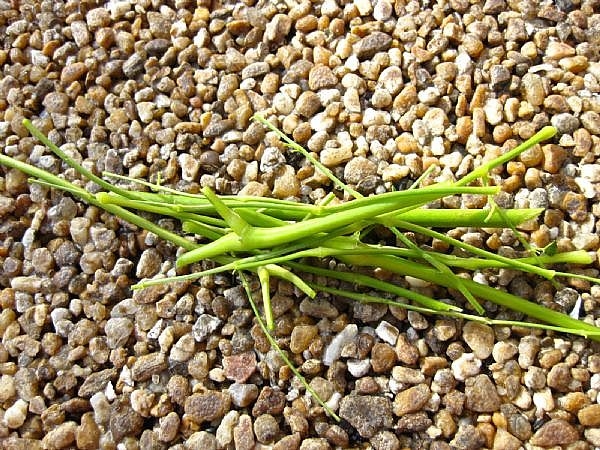Moringa Matters
HOW TO PRUNE
MORINGA TREES
This page was last updated: September 1, 2022
The more you prune Moringa trees, the more they will grow. Unlike many trees, Moringas actually seem to love being cut back, and will reward your efforts with thousands of leaves and hundreds of buds and flowers.
Left to themselves, they tend to get tall and spindly, and insist on putting leaves and flowers out only at their tops, which defeats the purpose of growing Moringas. We are going to tell you how to overcome that problem, easily. When you prune your Moringa trees this way, you will always have their bountiful harvest within reach!
Here are some of ours... >>>
When pruning Moringa trees of any variety, some basic rules apply. One of the first ones, is not to let the tree grow any taller than a height you can easily trim back. We like ours
to be between 8 to 12 feet tall, once they are established. Sometimes they grow taller, but we chop them back to a manageable height. When they are young, pinch off the new leaves that sprout, about every other time they appear.
Here is a photo of what part to pinch back... >>>
Sometimes, due to time restrictions, it is not always easy to pinch back every other new growth, so if they get away from you, and start to get spindly - just cut the entire top off - but leave at least 1/2 of the tree, intact. You will not hurt the Moringa tree, and it will love you for it.
Once the trees put out branches that are about 18 inches long, cut the branches in half, lengthwise, as in the 3rd photo. As your Moringa trees mature, the branches will get "woody" and produce lots of edible leaves.
The photo with the scissors, shown to the right, is of one of our young Moringa branches, which still has green bark on it. The leaves were stripped off and eaten, and the residue was put underneath the tree, for mulch. >>>
No matter how long the branches grow, cutting them back
to half of their length, encourages more branches to grow from the trunk of the tree, and discourages the "spindly" tendencies of Moringa.
We often strip the leaves off the branches, right where we are, and collect them in a container, to take inside for washing. Here is a photo of a very young branch that we pruned from the tree, and stripped. >>>
On the left of the photo, is the bare branch, and on the right is a tiny pile of leaves, that will be taken indoors, washed, and added to our evening meal.
Once we have pruned all of the branches that we wished to for the day, and stripped off the leaves, then we chop the branches into 4" to 10" lengths, and toss them back underneath the Moringa trees. We have found it to "mulch" the trees much better than any one of the various mulches we have dutifully heaved into a shopping cart, and lugged home. Oh - by the way - our "Moringa Mulch" is FREE!
Here are some of the cut branches, ready to perform their job as mulch. >>>
I usually do not let ours get over 12 feet tall, so it is easy to cut them way back, by just pulling the top of the tree toward me. That helps keep the weight of the pruned limb down, too - so I never have to struggle with very much weight.
Occasionally, they will get away from you - height-wise. That is ok - just prune them way back to the height you would like them to be, and sit back and wait for the leafy reward.
Here are some of ours, with a 6 foot fence behind them. >>>
Please remember - you cannot hurt them by cutting them back severely - they thrive on the "abuse". When you chop them back, they seem to "race" to put out more leaves!
~ ~ ~ REMEMBER - PRUNE FROM THE TOP! ~ ~ ~
The goal, is to keep the harvest from your Moringa trees - the leaves, buds, flowers, and pods - well within your grasp. Letting a Moringa tree get too tall, will still give you a lovely shade tree, but - you will need a ladder when you want to reap the harvest.
If you are diligent about pinching back the tops, and lopping limbs, it will always be a pleasant, easy task to prune them. If you are not, as we well know, it will be an ordeal.
So...pay attention to your Moringas, and pinch those baby tops back often.
Ignore advice from others about too much pruning - Moringas need it.
When the weather drops below 50°F, let them keep their leaves, and only prune if they threaten to get out of hand. Their growth slows way down, when the temperatures are cool. They may even lose all of their leaves, and look like dead sticks. As long as your Moringa trees do not endure a hard FREEZE, they will recover. Happy pruning!
MORE LINKS
MORINGA INFO



